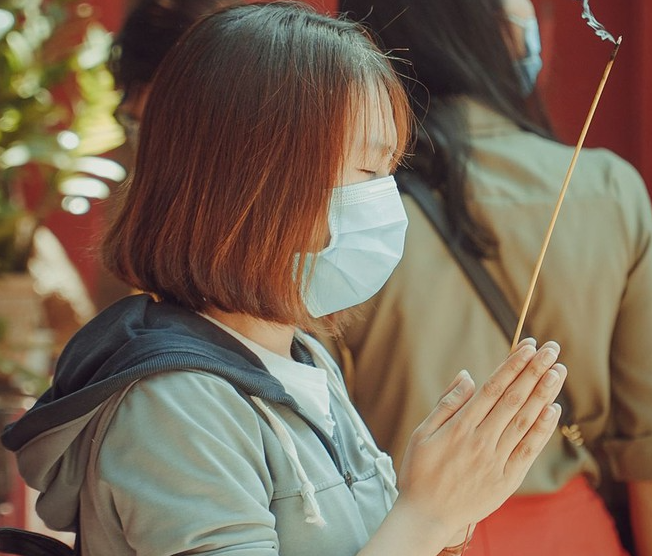 |
| “Nam mo A di da Phat” (Namah Amitabha Buddha) is only appropriate and meaningful when you visit Buddism facilities. (Photo: Thanh Nien) |
“Nam mo A di da Phat” – What does it mean?
In a recent interview with Thanh Nien, Mr. Hoang Trieu Hai, Head of Center of Research Principle of Ancient Oriental Astrology said “Nam mo” is the transliteration for “Namah” – a Sanskrit word that means obeying, respecting, and believing in Buddha. This is the initial stage of enlightenment, focusing on mindfulness, morality, observation. “A di da” (Amitabha) describing a non-bias attitude. This is the next step in the enlightenment process, including focusing, meditation, realization about life equality. “Phat” (Buddha) means enlightenment, liberation from samsara (the wheel of life), an accomplishment of wisdom, mindfulness, visionary, becoming a member of Buddahood.
Therefore, “Nam mo A di da Phat” (Namah Amitabha Buddha) is only appropriate and meaningful when you visit Buddism facilities. Otherwise, this saying is just ridiculous. Mr. Hoang Trieu Hai clarified that “Nam mo A di da Phat” would be considered disrespectful if said in a King’s communal house as the Kings are “sons of God”, who stand above every other human. As for family altars, Hai said “Nam mo A di da Phat” was also miss-used as family altars paid tribute to no Buddha.
 |
| Handclasp is called “Anjali Mudra”, which is popularly used in Indian religions and Buddism as a way to show respect and greetings towards the Buddhas. (Photo: Thanh Nien) |
Why Vietnamese clasp hands?
Handclasp is called “Anjali Mudra”, which is popularly used in Indian religions and Buddism as a way to show respect and greetings towards the Buddhas. In Vietnam’s traditional praying ceremony for the ancestors, priests are never seen doing the “Anjali Mudra” hand gesture. Instead, they keep their 2 hands together to create a cone shape with palms facing the ground.
In some of Vietnam’s localities, there are even lessons on hand gestures passing down from generation to generation. The lesson reads: “Sun and rain given by the sky, while flood rises from the ground. So remember to respect the elder, be kinds to the younger. When praying to the ancestors, place your left hand on the right hand, with the back of both hand cup up, while forming a circle with your arms.” This lesson, as well as the hand gesture, showing all elements in the yin and yang theory, therefore, it represents full wisdom in the Vietnam spirit life.
In terms of spiritual rituals, only by truly and deeply understanding our small gestures, can we preserve and develop Vietnam’s culture and civilization, said Mr. Hoang Trieu Hai, Head of Center of Research Principle of Ancient Oriental Astrology.
 |
| In terms of spiritual rituals, only by truly and deeply understanding our small gestures, can we preserve and develop Vietnam’s culture and civilization, said Hai. (Photo: Thanh Nien) |

